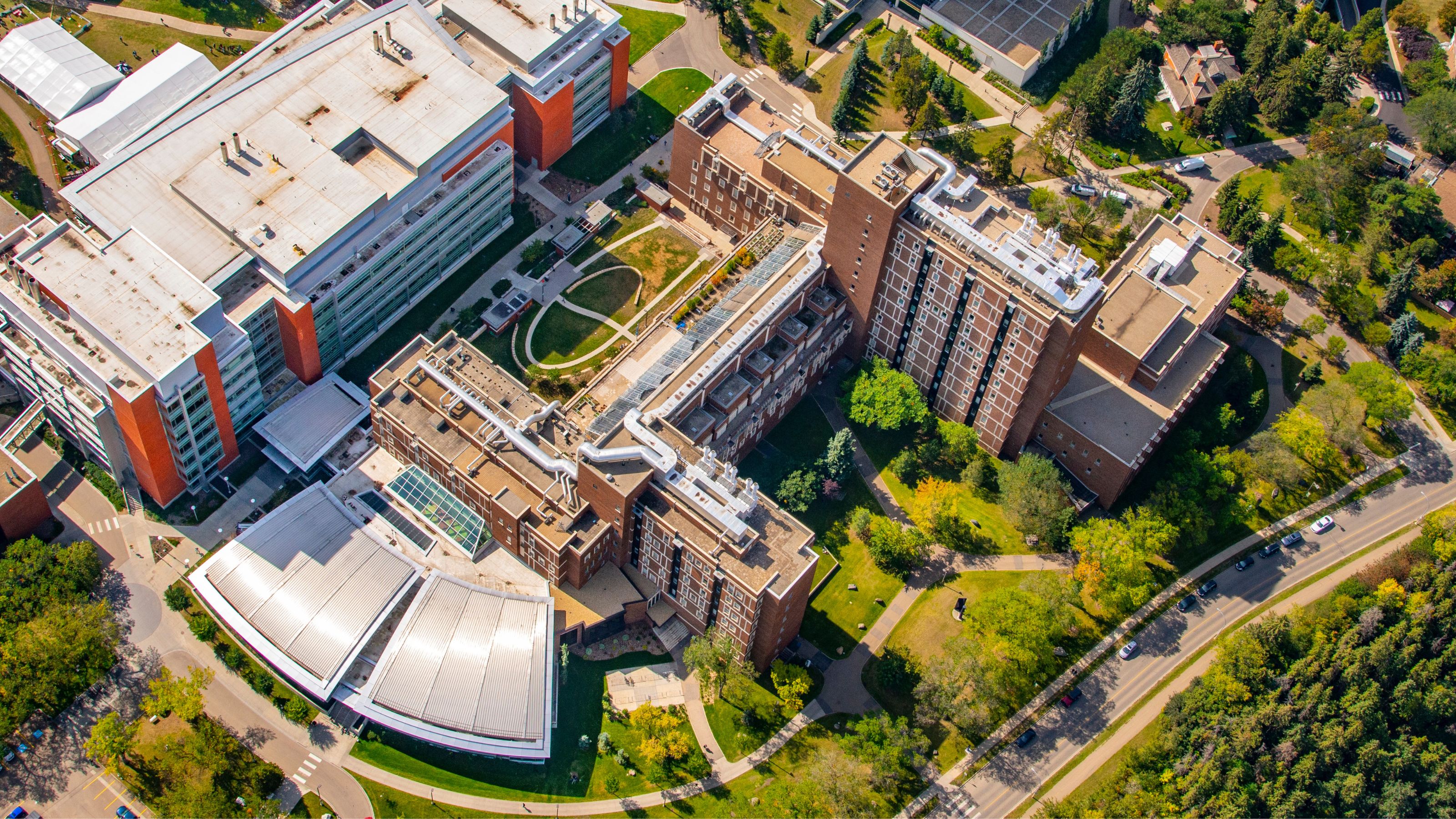Last week, I was honoured to attend COP27, the UN Climate Change Conference in Sharm El Sheikh, Egypt. Along with Aminah Robinson Fayek, our vice-president (research and innovation), we represented both the University of Alberta and the Worldwide Universities Network (WUN), of which the U of A has been an active member since 2008.
Proud of the U of A’s record as Canada’s leading university advancing research on energy transition, new energy solutions and climate change, Aminah and I had the opportunity to meet with a wide variety of key decision-makers from Canada and beyond, along with the opportunity to explore research links with universities worldwide.
As a member of Team Alberta — a broad cross-section of governmental, academic, NGO and industry partners from Alberta — we met with Sonya Savage, the provincial minister of environment and protected areas, and her staff, along with Emissions Reduction Alberta and Alberta Innovates, sharing a message of Alberta’s commitment to advancing energy solutions for the world and taking action on climate change. We also met with Canada’s ambassador for climate change, Catherine Stewart, and Canada’s minister of environment and climate change, Steven Guilbeault, sharing that same message and highlighting the vital role of university research in finding the solutions that will enable Canada to meet its ambitious climate change commitments.
In our conversations, we shared some of the leading U of A research programs relating to energy solutions and climate change. Launched in 2016, the Future Energy Systems (FES) program, supported with $75 million from the Canada First Research Excellence Fund (CFREF), is helping Canada transition to a low net-carbon energy economy. FES addresses a full range of energy fields, from sustainable development of fossil fuels to research on carbon capture and storage and renewables such as biomass, geothermal, wind, solar, and grids and storage. Using interdisciplinary approaches, FES tackles technical questions on energy; examines consequences for our society, economy and environment; and addresses mitigative and reclamation measures.
Understanding climate change and advancing energy solutions requires a broad range of interdisciplinary approaches. These approaches will involve technology and innovation, but will also need to address policy, social impacts and social innovation solutions. And we are doing just that with the Ărramăt project, supported with a $24-million grant in 2022 from the federal government’s New Frontiers in Research Fund. The project brings together more than 150 Indigenous organizations and governments from around the world, with researchers at 19 Canadian universities, two Canadian colleges and 14 international universities. They will carry out 140 Indigenous-led, place-based research projects to examine the links between the loss of biodiversity and the decline in Indigenous health. Working in more than 24 countries and speaking more than 30 languages, the diverse team will develop policy roadmaps for practical solutions in 10 areas, including strengthening Indigenous food systems and re-establishing healthy relationships with wild species.
Building on this record, the U of A has put forth the most ambitious research proposal we have ever undertaken. With our strong foundation of energy and climate research, the U of A is leading an application to the Canada First Research Excellence Fund for a research program entitled Energy Systems Transitions, Resilience and Climate Change (ESTRCC). ESTRCC is an unprecedented, interdisciplinary, pan-Canadian initiative involving 12 Canadian post-secondary institutions, international partners, industry and government. It brings together leading experts from diverse disciplines to deliver research results that will solve practical challenges in aiding resilient energy transition, climate change and energy systems resilience in northern cold-affected climates. ESTRCC will contribute to solutions that support under-represented and vulnerable communities in Canada’s rural and remote areas, and will support the goals of reconciliation with Indigenous communities. The outcomes of the proposed program will lead to the development and piloting of new technologies to achieve net zero targets; environmental, social and policy innovations; commercialization of technology; and training of highly qualified personnel. At COP27, Aminah and I had the opportunity to share details of this proposal with some key decision-makers, with the goal of building both provincial and federal support.
We had one central message in all these conversations: Alberta — and the University of Alberta — are at the forefront of developing the solutions that will enable Canada to advance energy solutions for the world and meet Canada’s climate change commitments.
I also participated in a panel discussion on Universities as Key Solutions Providers: Leveraging our Local and Global Networks for Innovation. My fellow panellists included representatives from Northwestern University, the University of Edinburgh, Université Côte d’Azur and the University of Toronto. We had a wide-ranging and engaged discussion of how universities working together can help address the many challenges posed by climate change and help find sustainable solutions for the planet. The discussion considered how the university networks represented on the panel, including the U7+, UC3 and WUN, could be leveraged. With almost half of its 24 university members from the Global South, WUN is particularly well placed to address the differential impacts of climate change around the world.
COP27 was a massive and somewhat overwhelming event, drawing more than 45,000 people from nearly 200 countries worldwide. Although the details are still being released, there was progress on at least one major initiative: Developed countries agreed to establish a loss and damage fund to assist vulnerable countries affected by climate change-related disasters.
But COP27 was much more than its final protocol. It was an opportunity for an enormously wide range of governments, NGOs, industry and academic partners from around the world to come together and share innovations and ideas, all of which are urgently needed if the world is to meet its climate change ambitions and secure a sustainable future for the planet.
Bill Flanagan
President and Vice-chancellor
